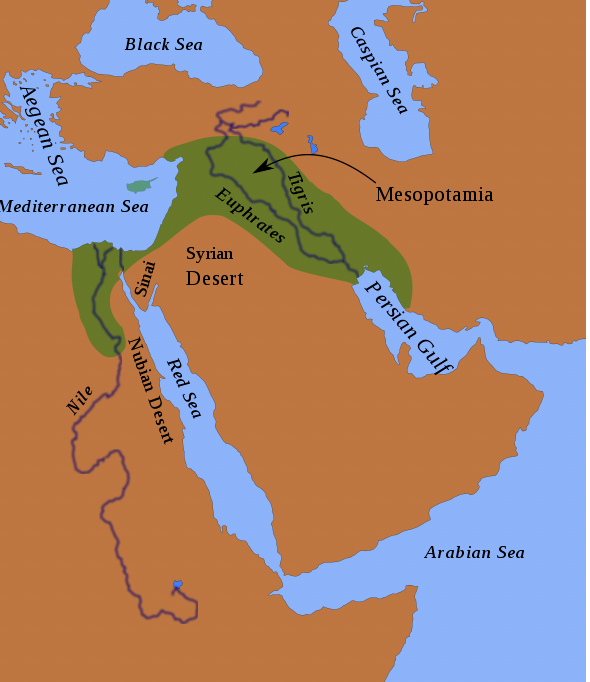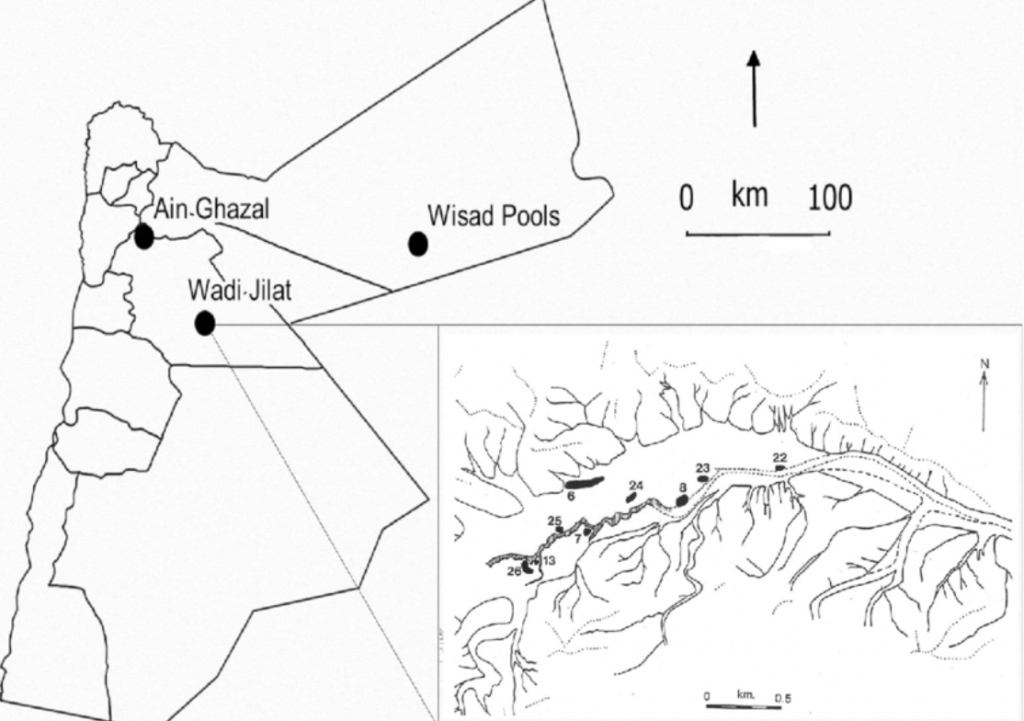12,000 years ago hunter-gathers abandoned their long standing nomadic lifestyle and ventured towards a more efficient means of gathering food, that means came to be known as farming. (Chatterjee, 2016)

The Fertile Crescent, as seen in Figure 1, is a region that spans through present day Iraq, Syria, Lebanon, Israel and Jordan. The geographic features of the region allowed for the area to become a pinnacle of agricultural production dating back more than 11,000 years ago. (Chatterjee, 2016) The Tigris, Euphrates, as well as the Nile River, each traverse through the region. The convergence of these rivers helped to produce fertile soil, which is necessary for agriculture. Additionally, the rivers played an integral role in the development of irrigation, which is a necessary tool for the production of agricultural goods. Likewise, the easy access to the large waterways led to the development of trade routes. These trade routes not only transported goods and people, but also allowed for the interaction and confluence of diverse cultures and ideas. As the traders traveled back to their homeland, they transported these cultures and ideas. In essence, the Fertile Crescent become a melting pot for ideas, education and culture. These intangibles were exported along with the tangible agricultural products and goods. (Zimmer, 2016)
Research has exhibited that no one central location in the Fertile Crescent can take credit for the invention of farming. Instead, evidence suggests that a number of smaller sites within the Fertile Crescent simultaneously practiced farming separate and apart from other groups. Researchers have examined the DNA of multiple groups that inhabited the Fertile Crescent in various locations. The DNA of individuals within those groups indicted that the groups were in no way related. Therefore, one can conclude that farming developed concurrently, at or around the same time, by various individual groups that were not interrelated. (Zimmer, 2016)

One of the first locations farming was found to appear was the village of Ain Ghazal. That villages that lies in central Jordan, as seen in Figure 2, which is located in the Fertile Crescent. An analysis of the site evidences the progression from a nomadic society to more agricultural based society. Specific examples of this progression can be seen in the fact that crops were raised, animals were domesticated and tools were created for farming. The farmers of the village would raise barley, wheat, chickpeas and lentils. Additionally, they would herd sheep and goats in the nearby hillsides. Another site examined was located on the coast of the Sea of Galilee. That site revealed huts that contained the remnants of 150,000 charred seeds and fruits, along with olives, almonds and grapes. Also located at the site were tools used to harvest cereals (Zimmer 2016). The totality of the findings at these sites indicate a society well on its way to transition itself from the nomadic lifestyle to an agriculturally based society.
References:
Astrohikeandski. 2018.“File:Fertile Crescent.Svg – Wikipedia.” 2018. December 14, 2018. https://commons.wikimedia.org/wiki/File:Fertile_Crescent.svg.
Chatterjee, Rhitu. 2016. “Where Did Agriculture Begin? Oh Boy, It’s Complicated.” NPR, July 15, 2016, sec. Food For Thought. https://www.npr.org/sections/thesalt/2016/07/15/485722228/where-did-agriculture-begin-oh-boy-its-complicated.
Garrard, Andrew. 2019. “Figure 1 Map of Jordan Showing Locations of ’Ain Ghazal, Wisad Pools…” ResearchGate. August 2019. https://www.researchgate.net/figure/Map-of-Jordan-showing-locations-of-Ain-Ghazal-Wisad-Pools-and-sites-at-the-eastern-end_fig1_335515035.
Zimmer, Carl. 2016. “How the First Farmers Changed History.” The New York Times, October 17, 2016, sec. Science. https://www.nytimes.com/2016/10/18/science/ancient-farmers-archaeology-dna.html.
Further Research Links:
https://www.britannica.com/place/Ain-Ghazal
https://www.latimes.com/science/sciencenow/la-sci-sn-first-farmers-dna-20160714-snap-story.html

What other major farming locations were identified aside from the village of Ain Ghazal? How do these locations echo with their counterparts in contouring the history of farming?